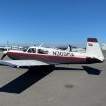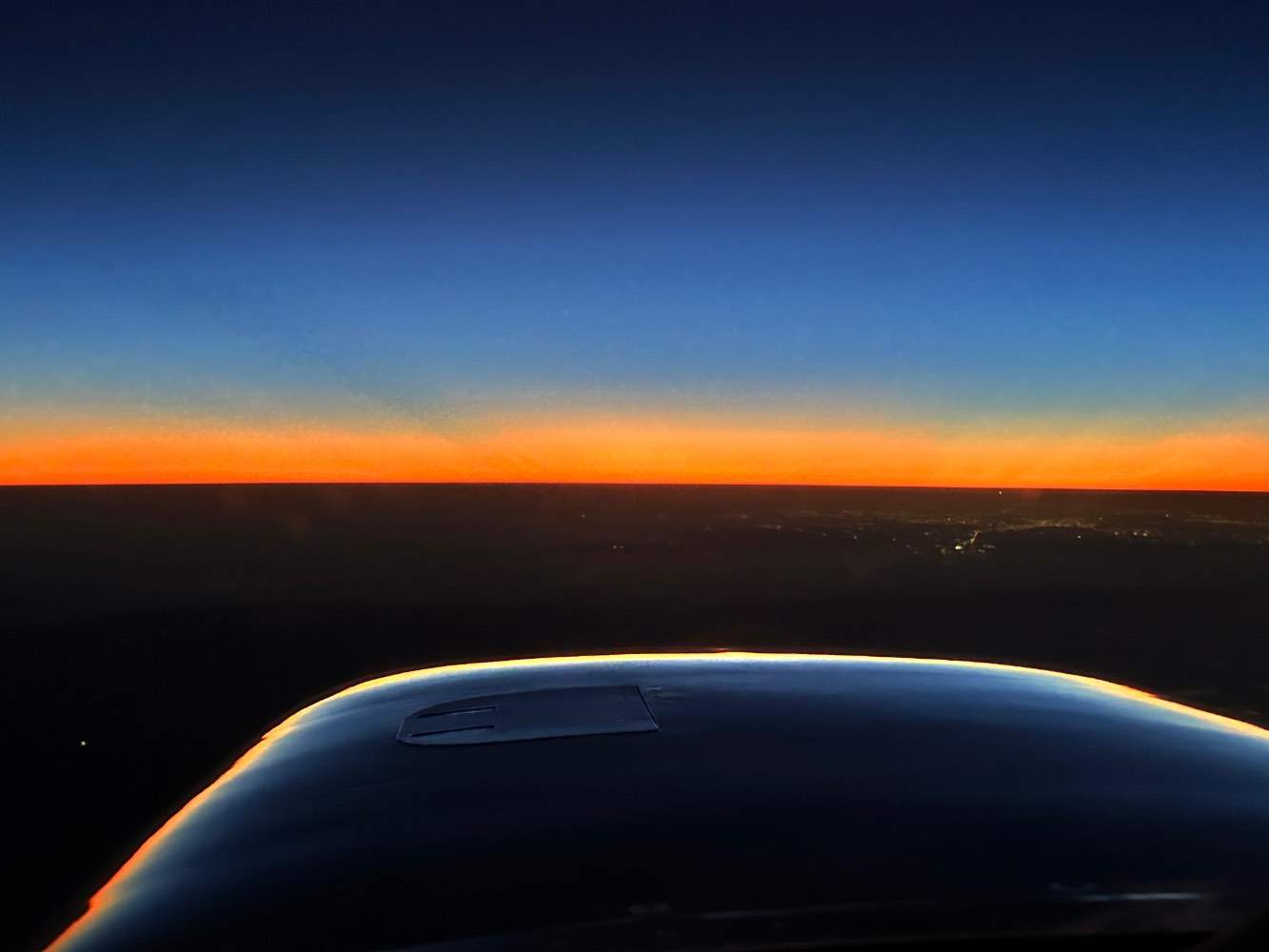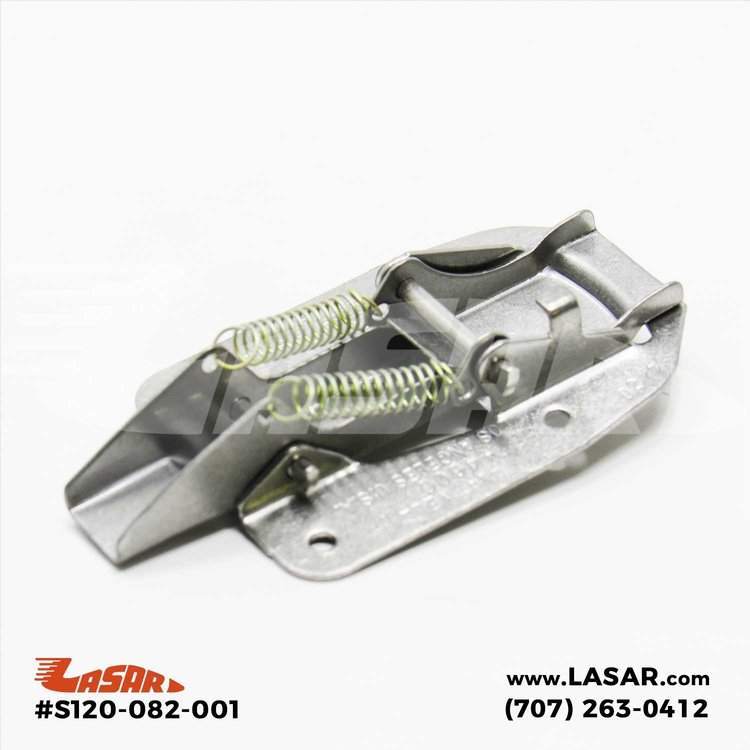-
Posts
1,307 -
Joined
-
Last visited
-
Days Won
10
Content Type
Profiles
Forums
Blogs
Gallery
Downloads
Media Demo
Events
Everything posted by Marc_B
-
-
@1980Mooney For some reason I was (incorrectly) thinking both the Missile and Rocket gave you a turbo. Ha. Nope.
-

How do you remove the headliner?
Marc_B replied to AspiringOwner's topic in Modern Mooney Discussion
You have to remove the seatbelt shoulder harnesses and sidewalls first then the screws are visible. The upper panels overlap the headliner. There are some screws that have barrel washers as an offset. The headliner is the first interior panel installed and the last to come off. Take plenty of pictures so you know how it all fits back together. It’s a game of Tetris and will be easier with a helper. The material that Mooney used for the overhead ducts is thin and with age can come unglued at the longitudinal seam. They also used zip ties instead of cable clamps to attach the hose to the wemac elbow. So it may have just come off. But if you find the duct material needs replacing, do it now when you have your headliner down and be done with it. Otherwise it’s a PITA to go back and pull it all down again. -
@mike_elliott I didn't need a complete latch but rather wanted to replace the rusted springs. I'll see if the ebay order are the correct springs and will PM you if they aren't the right springs. But that does look like the same latch on my oil door.
-
If you look in the second picture down, your stop tab is ripped back 90 deg. probably has a hole in the truss there. I'd refuse to taxi it and let the shop assume the liability if the nose truss broke on taxi resulting in a prop strike. Certainly wouldn't fly it anywhere to repair. I can't remember where I saw it, but wasn't there a Mooney who had the welds break off resulting in a prop strike that looked like it had been oversteered while towing and was felt that was what weakened the truss...
-
I found these...HARTWELL LATCH SPRINGS H4609 FOR H4600 / H5000 LATCHES SET OF 5 https://www.ebay.com/itm/264774515036 McMaster or Carr could probably sell some to spec but not sure the size without taking off and measuring...I couldn't find a spec online for a H4609 spring nor a parts diagram for the Hartwell latch. The ebay springs are cheap enough that I'll probably just order a package and see if they're the right spring.
-
Have Hartwell latches on my oil filler access door and two of the springs are rusted out and near breaking. Lasar used to sell the latches, but no longer available. However, all I need is the simple spring...does anyone have a product number/dimensions for spring and a source for purchase? The latch is Hartwell H-4600-051-115 if that helps. Thanks!
-
https://data.ntsb.gov/Docket?ProjectID=106726 If you click though the docket, the aircraft had a JPI EDM700 and there was temp data recorded, although I don't see fuel flow data. https://data.ntsb.gov/Docket/Document/docBLOB?ID=16368357&FileExtension=pdf&FileName=ENGINE DATA MONITORS - SPECIALIST'S FACTUAL REPORT-Rel.pdf https://data.ntsb.gov/Docket/Document/docBLOB?ID=16367961&FileExtension=csv&FileName=ATTACHMENT 1 TO ENGINE DATA MONITORS - SPECIALISTS FACTUAL REPORT-Rel.csv 15:54 there's a jump in EGT/TIT of ~100F, but then start to step down... (this is what I typically see with a big mixture pull, then fine tune dial in my FF for desired power setting) 15:57 is when the temp for CHT6 starts to rapidly ramp up to 619F. I'm not savvy with reading the raw data and extrapolating what was going on at the time. But even when CHT6 was ramping up, the other CHTs were still mostly around 375-400F which seems to suggest something with cylinder 6. It's also 20 minutes in and would seem in cruise after level off? (vs accidently had mixture leaned and took off or leaning in the climb). I'm not sure what a failure to enrichen on takeoff or a lean during the climb would look like...but from a novice (me) looking at this engine monitor data that's not what it seems to me...certainly there was something with Cylinder 6 that detonated out of control much different than any of the other cylinders. Not sure you can explain this with spark plugs or magneto timing (issues noted in NTSB report) either?? EDIT: not sure if the timestamps on the engine monitor accurately represent the ADS-B data from the flight track map in the original post...but it does appear that altitude was relatively constant at 7100...level off at 7500 and lean? https://globe.adsbexchange.com/?icao=a32f42&lat=30.118&lon=-98.154&zoom=11.1&showTrace=2023-02-12×tamp=1676216828
-
+1 I have a Bruce's cover and it works well and well made. I have snaps on the front two corners and a strap that loops around the back. There is enough horizontal tension on the snaps that I can't imagine it coming off accidently. But it also has plastic D rings on the end that I could also strap the corners together up front if I choose to.
-
I gather that by locking it you are removing someone else from tampering with the door to change the condition you left it. When I did my transition into Mooney we had a discussion of locked vs unlocked. The most important part is that it was properly closed. Some Medeco locks have a captured key where you have to leave the key in the door and can't take it out until it's closed and locked. I purchased my set from Aircraft Security, and it is not set up to capture the key when open. Not sure if that's an installer adjustment vs it comes that way. I've always religiously checked the door handle when I'm stepping up to the aircraft to get in. Haven't felt the need to lock it, but it certainly sounds like an easy ounce of prevention moving forward. What models were those found on? Anything worn or minimally functional on the locks/latches? This is the first I've heard of actually closed and latched doors coming open in flight.
-
@PT20J Are these sumps only “sealed“ with the o-rings or are they sealed on the inside of the wing with sealant from factory or with tank reseal? I’ve always been curious if these were made to be easily replaced if needed…
-

Foggy/muted wing taxi/landing lights lenses
Marc_B replied to PeterRus's topic in General Mooney Talk
The one benefit of having your A&P do it is that if they crack it, it’s their expense. If you crack it it’s yours. But with right tools and technique it shouldn’t be that difficult. If you can send in your lens, you might reach out to GLAP and that might be a good middle ground. -
Less chance of RF interference with new LED as well!
-
I find using google for search “door seal site:mooneyspace.com” more helpful than the MS integrated search.
-
+1. That was my first flight bag and still my fav but unfortunately padding finally crumbling due to age. Perfect size and setup for me!
-
https://www.aopa.org/news-and-media/all-news/2016/november/15/checking-the-dipstick Engines are certified to be operational with half the oil capacity. There is a sweet spot where your engine isn’t spitting out oil on the belly and your oil “consumption” actually reflects the oil consumed rather than oil ejected on the belly. The time that I actually keep higher than that is on long cross country trip where I utilize the heat capacity of an extra quart of oil for cooling. Regarding drop in oil readings after shut down from preflight…there is so much oil slung around the inside of the engine, throughout the hoses, oil cooler…more accurate reading is taken at preflight. I find my oil consumption most stable between 5.5-6.5 qts. So I typically aim for 6. Long cross country I’ll up to 7 qts. (Conti TSIO360SB2, sump 8 qts)
-
@donkaye I've had the same curiosity as to when I'll be up for replacing them...at failure or prophylactically? I guess you know it's time when it's time! I had to do a double take as 5 years from 2019 was this year. But the SB was 5 years from the date of the bulletin (5/4/2023). Five years in service on a set of servos in the affected range sounds like a good run. I think that a lot of pilots may be playing the same game of waiting until failure to replace vs just getting them replaced as there is a significant difference in the warranty time pre and post replacement (warranty good thru 5/4/2028 vs good for 6 more months). But it's good to hear feedback on what failed, when and if it was a significant issues with flight! https://support.garmin.com/en-US/aviation/faq/yG9YhFImtt8XiNr8uLLUA6/
-
Understand high altitude misfire with magnetos...But inside the magneto is different environment than at the cap. I don't think the recommendation was for pressurizing the EIS, but rather the harness cap alone.
-
I gather the general gist is that flying though clear air at Mooney speeds is unlikely to generate a lot of static. However, flying though snow or dust storm is much more likely to cause issues. Clouds and rain seems like a middle ground. Static wicks might also help in the unlikely event of lightning strike. But they're priced so that if you have them you might go ahead and keep them. But if you don't have them, then you probably aren't going to add them. I have a M20K 25-2008 that has 3 on each control surface. Over time the threaded rod corrodes and when they break it's usually at the rod instead of the wick, so the entire base has to be replaced since it's a problem to try to drill and tap a base to replace the threaded rod...the wicks come with a female end.
-

Help me put together a pack of screws and hardware for the interior
Marc_B replied to AJ88V's topic in General Mooney Talk
I believe they are mostly #6 and #4 screws and some have finishing washers. But they're cheap enough that you could order 50 of each length that you think you might need. Some of the smaller ones around trim are the shorter ones. Some of the overhead are longer ones. If you're just replacing ones with marred heads, it should hopefully be easy to see which ones you need... But caveat...these are the screws that I used for my M20K...I'm not sure if they are the same for the M20C, but figured it's at least a good place to start. What does your IPC show for PN's? Part# 04-03898 39104C FINISHING WASHER Part# 04-03899 WASHER NAS391B6P / 601-6 39106C Part# T4X6 4X3/8-A-TR-PH-SS SHT MET SCREW Part# 04-00166 4X3/8-B-TR-PH-SS TAPPING SCREW Part# O6X8 6X1/2-A-OV-PH-SS OVAL SS SCREW Part# O6X12 6X3/4-A-OV-PH-SS OVAL SS SCREW Part# O6X16 6X1-A-OV-PH-SS OVAL SS SCREW -
Recently was talking to fellow turbo Mooney pilots installing Surefly units and evidently there is some discussion of the possibility of a high altitude arcing/misfire in the ignition harness cap... Supposedly there may be cases in Cirrus aircraft with an EIS installed of arcing in the cap. I've not heard of this before and I've only found a single thread here on MS regarding this. In speaking with Surefly, they mentioned using a high-altitude ignition harness, drilling a hole in the cap and attaching to upper deck pressure line from previous mag, or both to help prevent this. I'm curious how frequently this is an issue and at what altitudes it has been documented? I also couldn't find any information documenting Cirrus issues with this, but my understanding is that is where this was first mentioned/seen? Any direct experience with this or a solution looking for a problem?
-
@kortopates I sent an email to Surefly and their response was a recommendation to pressurize cap... FWIW I've not been aware of any issues at altitude and have flown routinely in the high teens and low FL's since having the Surefly installed in April 2023. Sounds like Jim Barker is a Cirrus mechanic and they were running into some issues with Surefly in turbo Cirrus applications flown routinely in the FLs. hmmm. "Hello Marc, we have found that when an aircraft is operated at higher altitudes with standard harnesses arcing in the cap can occur due to separation in the wire insulation of the leads at those lower atmospheric pressures. We have since been recommending either a high altitude harness or a pressurized cap or both. A high altitude harness can be manufactured for you by Alan Woods at Champion Aerospace. His e-mail is alanwoods@champaero.com 864-843-7801. And a pressurizing kit can be acquired from Jim Barker of Aviation Resources. His contact info is jim@aviationvibes.com 715-822-5787."
-
Thanks Paul. That was my first thought as well. Avoiding needing to pressurize the mag for a turbo Mooney is one of the great selling points for EIS in my book!
-
Reviving this thread to see if there's been any updates? I installed a Surefly with a Maggie harness a year ago at annual and have been up to FL's from time to time and have not experienced any misfires. My shop didn't offer to pressurize the cap and just removed the upper deck pressure line and the T that went to the previous mag it replaced. But I was talking to a fellow M20K pilot the other day who mentioned about drilling a hole in the cap for the pressure line...I don't recall coming across the idea of pressurizing the cap previously when I was learning about installing a Surefly. @kortopates did you pressurize your cap and do you or Savvy typically recommend this?
-
I believe 670105 is a riveted V-band clamp and 653337 is a spot welded that has been superceded. My suspicion is that you could use either, but I gather that the push was to move away from spot welded clamps towards riveted. Both have a limit of some type be it number of times torqued (rivet) vs 500 hrs in service (spot weld). But the best person to ask may be the IA who does your annuals. I suspect that it's an either/or discussion with individual preferences. But I'm not an A&P or IA.






